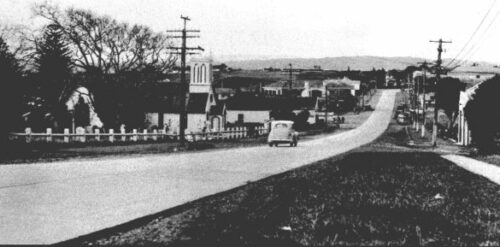
In 1945, after the end of World War II, there was an uneasy peace around most of the world.
In 1949 our Prime Minister Peter Fraser introduced Compulsory Military Training (CMT) for all 18-year-old men for 14 weeks, then 20 days each year for two years including a 14-day annual camp. The CMT ceased in 1957. All boys had received military training at secondary schools, including rifle range practice.
In July 1950, the Democratic People’s Republic of Korea in North Korea, with the assistance of the Peoples Republic of China, invaded the Republic of South Korea. The American-led United Nations forces called for assistance from many countries including New Zealand, as a “peacekeeping force” – 1056 volunteers were sent from New Zealand in the K-Force including seven from Howick.
South Korea was an ally of Britain serving against Japan and Germany in World War II.
When our soldiers left, most thought the war would be over in six months. It took two-and-a-half years. America said they would not use atomic bombs on Korea.
Politicians said the war “would stop the flow of Communism from Soviet Russia” and most New Zealanders supported the war.
The prices for wool, cheese, butter and milk powder all increased during this period, pleasing the farmers. The manganese mine at Kohukohunui, Clevedon, operated by Pat Manning of Howick increased production for wartime armaments.
The Howick volunteers included Jack Sivewright and Bob Skeen, both gunners, along with Terry Lees, Brian O’Connell, Second Lt. L. Pearson, and Captain Phil Hughes RNZAF. Three frigates were sent from New Zealand: the HMNZS Pukaki and HMNZS Tutira and HMS Rotoiti which included L. Seaman Ron Hulse RNZN.
A farewell dance social was held in the Howick Town Hall and they were given a gift from the community before leaving. There were advertisements in Howick newspapers for books to be sent to South Korea for our troops.
Some sent extra warm clothing as it was often down to minus 30 degrees C. As recognition for their service, those serving in South Korea were offered low interest rates by banks for sections and homes on their return.
John Granger, the Whitford hillbilly guitar-playing artist and yodelling drover, toured for six months – four months in South Korea and two months in Japan entertaining the New Zealand troops with the National Broadcasting Service Concert Party. All were in military uniforms but no “dog tags” [with names in case you were shot]. Concerts were in daylight.
In July 1953, an armistice was signed, and an uneasy peace remains with a DMZ (Demilitarised Zone) of a 160-mile-long corridor, 2.5 miles wide over the Korean Peninsula.
Of those serving from New Zealand, 33 died in active service, 79 were wounded and one was taken prisoner. All the Howick men survived although they all complained of the extreme cold in the Korean winter months.
Most returned to live in Howick.
- Alan La Roche MBE
Howick Historian
alanlaroche@xtra.co.nz










